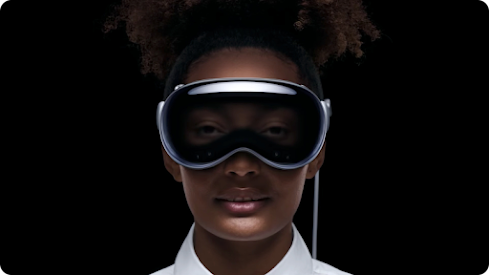Introduction: Apple’s Most Overhyped Product?
Apple has built a reputation for game-changing innovation—from the iPhone to the MacBook. But with the launch of the Vision Pro, priced at a staggering $3,500, many are asking:
👉 Is this truly the future of computing, or just an overpriced gimmick?
Apple calls it “spatial computing,” but early reviews reveal a different story. The hype doesn’t match reality, leaving many wondering if the Vision Pro is more of a luxury toy than a practical device.
So, let’s break it down: Is Vision Pro worth it, or is Apple selling a dream that no one really needs?
1. The Insane Price Tag: $3,500 for What?
💰 At $3,500, the Vision Pro is more expensive than a high-end MacBook.
Apple claims it replaces:
✅ A TV (but who wants to wear a headset for hours?)
✅ A gaming console (but lacks AAA gaming support)
✅ A laptop (but it’s not practical for work)
Meanwhile, Meta’s Quest 3 is just $499 and offers many of the same features. So what makes Vision Pro worth 7x the price?
2. Bulky, Heavy, and Uncomfortable
Apple is known for sleek, lightweight designs—but the Vision Pro? Not so much.
🚫 Weighs nearly 1.4 lbs (650g)—heavier than most VR headsets
🚫 Requires an external battery pack—because even Apple couldn’t fit enough power inside
🚫 Short battery life (only 2 hours)—making it impractical for long use
For a $3,500 device, shouldn’t comfort and usability be top priorities?
3. Limited App Ecosystem = Expensive Paperweight?
At launch, many major apps are missing or limited.
❌ No Netflix, YouTube, or Spotify apps (you have to use the web version)
❌ No SteamVR support (meaning no access to a massive gaming library)
❌ Few productivity apps (it’s not a serious work device)
Unlike the iPhone, which had a thriving App Store, Vision Pro feels empty—and developers aren’t rushing to build apps for it.
4. “Spatial Computing” Sounds Cool, But…
Apple’s marketing makes “spatial computing” sound like the future. But what does it really mean?
👀 It’s just VR/AR with Apple branding.
📱 Most tasks can be done better on a phone, tablet, or laptop.
🏡 Not ideal for daily use—who wants to wear a headset all day?
It’s an impressive tech demo, but not a practical device for most people.
5. Where’s the Mass Adoption?
When the iPhone launched, it changed the world. But Vision Pro? It’s struggling to find its purpose.
👎 Too expensive for average consumers
👎 Not good enough for serious VR/AR users
👎 Lack of software makes it feel incomplete
Apple’s own executives have admitted that Vision Pro is still an “experiment.” So why should people pay $3,500 for a beta product?
6. Who Is This Actually For?
🚀 Tech enthusiasts? Maybe—but even they say the price is hard to justify.
📈 Businesses? Some companies might use it, but it’s not built for professional work.
🎮 Gamers? No, because it lacks major VR game support.
The truth? It’s a niche product with no clear audience—except for Apple fans willing to spend thousands for early access to “the future.”
7. The Future of Vision Pro: Will It Flop?
Right now, Vision Pro is more of a luxury gadget than a must-have device. But Apple has a history of improving products over time.
🔮 Will a cheaper version make it more accessible?
🔮 Will developers create killer apps to justify the price?
🔮 Will future updates fix its biggest flaws?
For now, Vision Pro feels more like a tech flex than a game-changer.
Conclusion: Vision Pro – Innovation or Overpriced Experiment?
Apple wants us to believe Vision Pro is the future of computing. But at $3,500, with limited apps, a bulky design, and unclear use cases, it’s hard to justify.
🔥 Would you buy the Vision Pro, or is it just an expensive gimmick? Let’s discuss in the comments!









0 Comments